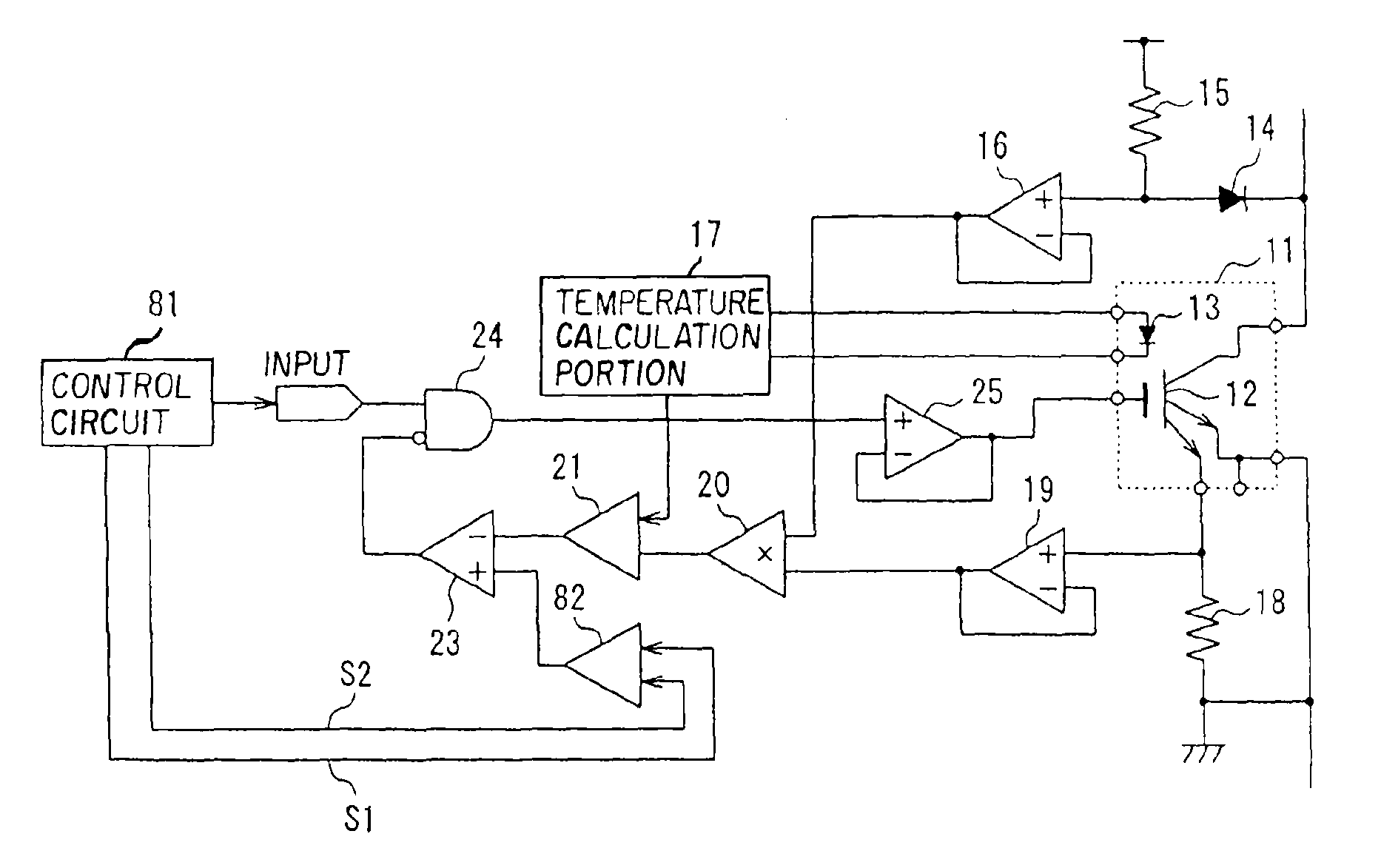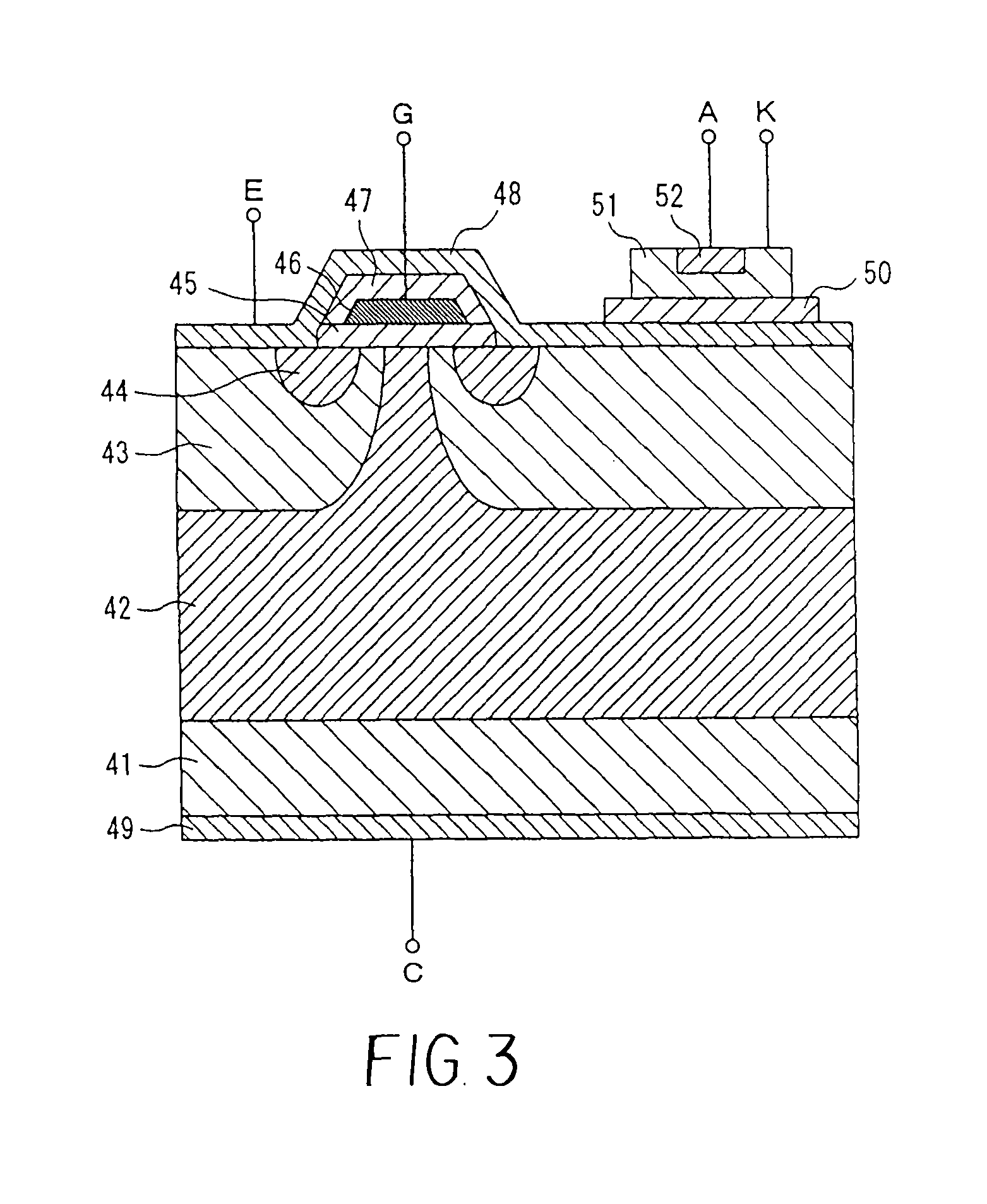Semiconductor device
a semiconductor chip and semiconductor technology, applied in the direction of pulse technique, electronic switching, emergency protective circuit arrangement, etc., can solve the problems of solder cracks, solder fatigue, danger of etc., to prevent thermal failure of semiconductor chips, enhance detection accuracy, and prevent solder cracks
- Summary
- Abstract
- Description
- Claims
- Application Information
AI Technical Summary
Benefits of technology
Problems solved by technology
Method used
Image
Examples
Embodiment Construction
[0031]Semiconductor devices in accordance with the invention will now be explained in greater detail. FIG. 1 is a block diagram showing in summary the configuration of the semiconductor device of a first aspect of the invention. In FIG. 1, a switching element 12 which performs switching operation and a diode 13 used to detect the temperature of the semiconductor chip 11 are formed on the semiconductor chip 11. As the switching element 12, an IGBT (Insulated Gate Bipolar Transistor), a bipolar transistor, or a power MOSFET can be used. The semiconductor chip 11 can be mounted on a copper base with high thermal conductivity, with a ceramic substrate interposed for insulation, and solder can be used for bonding of members between the semiconductor chip and the copper base.
[0032]The semiconductor device provided with the semiconductor chip 11 is also provided with a voltage detection circuit 16 that detects the voltage applied to the switching element 12; a current detection circuit 19 ...
PUM
 Login to View More
Login to View More Abstract
Description
Claims
Application Information
 Login to View More
Login to View More - R&D
- Intellectual Property
- Life Sciences
- Materials
- Tech Scout
- Unparalleled Data Quality
- Higher Quality Content
- 60% Fewer Hallucinations
Browse by: Latest US Patents, China's latest patents, Technical Efficacy Thesaurus, Application Domain, Technology Topic, Popular Technical Reports.
© 2025 PatSnap. All rights reserved.Legal|Privacy policy|Modern Slavery Act Transparency Statement|Sitemap|About US| Contact US: help@patsnap.com



